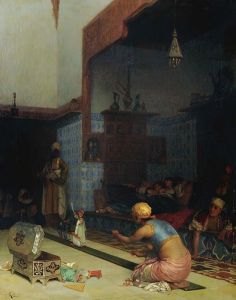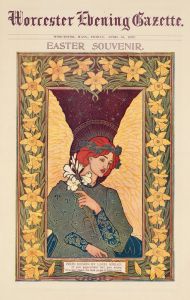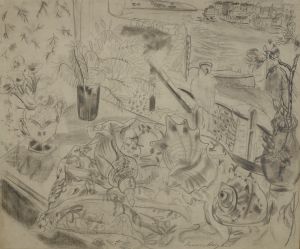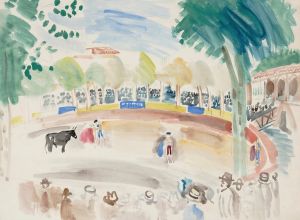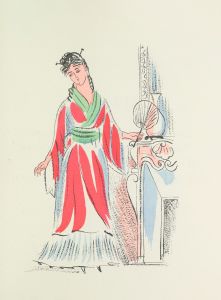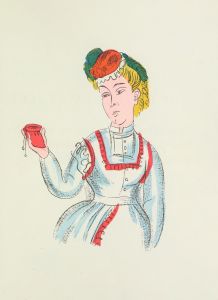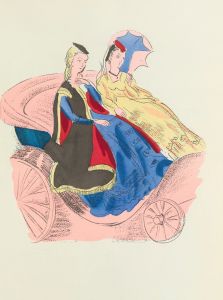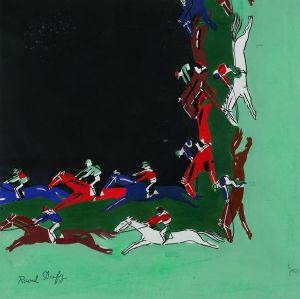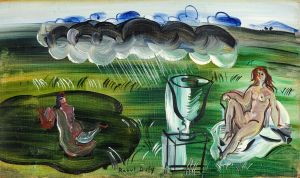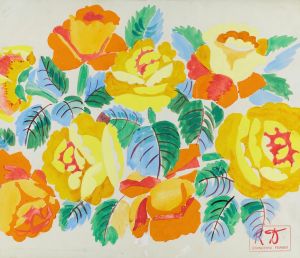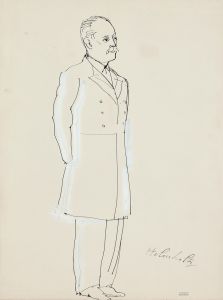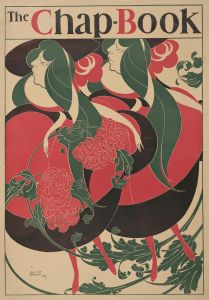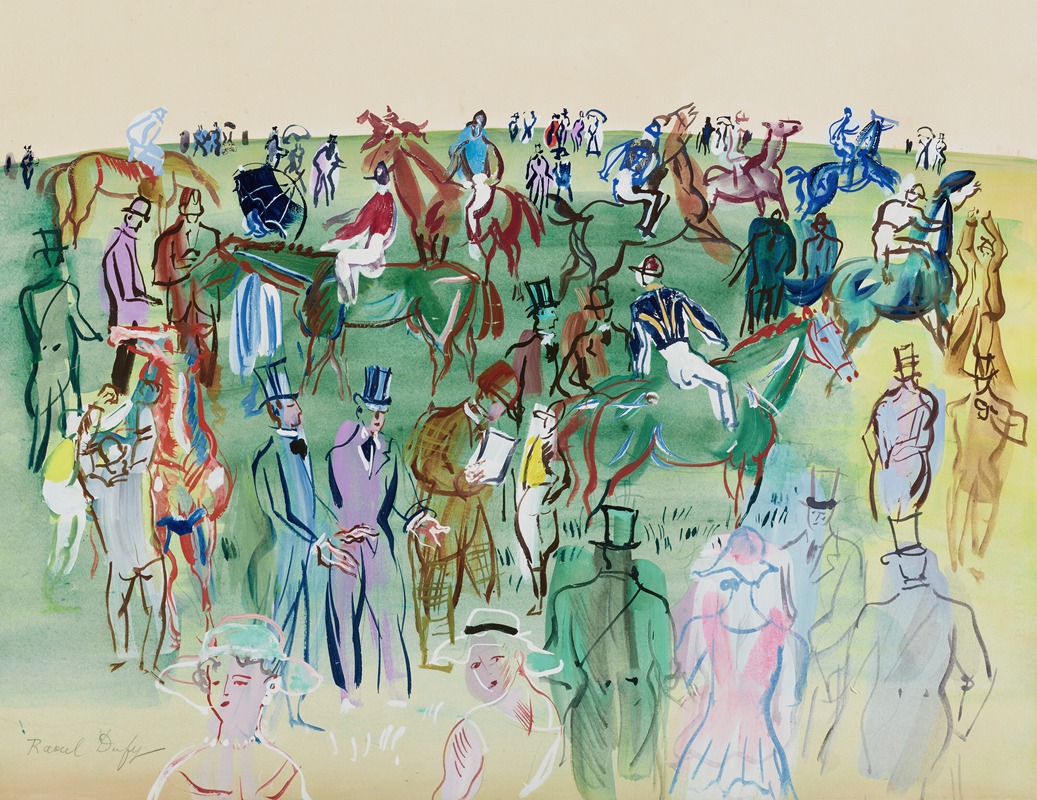
La Pelouse
A hand-painted replica of Raoul Dufy’s masterpiece La Pelouse, meticulously crafted by professional artists to capture the true essence of the original. Each piece is created with museum-quality canvas and rare mineral pigments, carefully painted by experienced artists with delicate brushstrokes and rich, layered colors to perfectly recreate the texture of the original artwork. Unlike machine-printed reproductions, this hand-painted version brings the painting to life, infused with the artist’s emotions and skill in every stroke. Whether for personal collection or home decoration, it instantly elevates the artistic atmosphere of any space.
Raoul Dufy (1877–1953) was a French Fauvist painter known for his colorful and decorative style, which often depicted leisure activities and scenes of social life. One of his works, "La Pelouse," exemplifies his vibrant approach to capturing the essence of outdoor leisure scenes.
"La Pelouse," which translates to "The Lawn" in English, is a painting that showcases Dufy's characteristic use of bright colors and fluid lines. While specific details about the creation date and current location of "La Pelouse" are not widely documented, the painting is consistent with Dufy's broader body of work, which often focused on themes of pleasure and relaxation.
Dufy was heavily influenced by the Fauvist movement, which emphasized painterly qualities and strong color over representational or realistic values. This influence is evident in "La Pelouse," where the use of bold, non-naturalistic colors and dynamic brushstrokes creates a sense of movement and joy. The painting likely depicts a scene of people enjoying a day outdoors, possibly in a park or garden setting, which was a common subject for Dufy.
Throughout his career, Dufy was known for his ability to capture the spirit of the early 20th century, a period marked by significant social and cultural changes. His works often reflect the optimism and vibrancy of the time, and "La Pelouse" is no exception. The painting's lively composition and cheerful palette convey a sense of carefree enjoyment, inviting viewers to immerse themselves in the depicted scene.
Dufy's technique involved a combination of drawing and painting, where he would often outline figures and objects with bold lines before filling them in with washes of color. This approach is evident in "La Pelouse," where the outlines help define the forms while the colors bring them to life. The interplay between line and color is a hallmark of Dufy's style, contributing to the overall sense of harmony and rhythm in his work.
In addition to his paintings, Dufy was also a prolific designer, creating textiles, ceramics, and public murals. His diverse artistic endeavors were united by a consistent aesthetic that celebrated beauty and joy. "La Pelouse" fits within this context, as it embodies the lighthearted and decorative qualities that define much of Dufy's oeuvre.
While specific exhibitions or collections featuring "La Pelouse" are not extensively documented, Dufy's works are held in numerous prestigious institutions worldwide, including the Museum of Modern Art in New York and the Centre Pompidou in Paris. His influence extends beyond the art world, as his designs have been used in fashion and interior decoration, further cementing his legacy as a versatile and influential artist.
In summary, "La Pelouse" by Raoul Dufy is a vibrant representation of leisure and enjoyment, characterized by the artist's signature use of color and line. It reflects the Fauvist influence and Dufy's broader artistic themes, capturing the spirit of an era with its joyful depiction of outdoor life.





